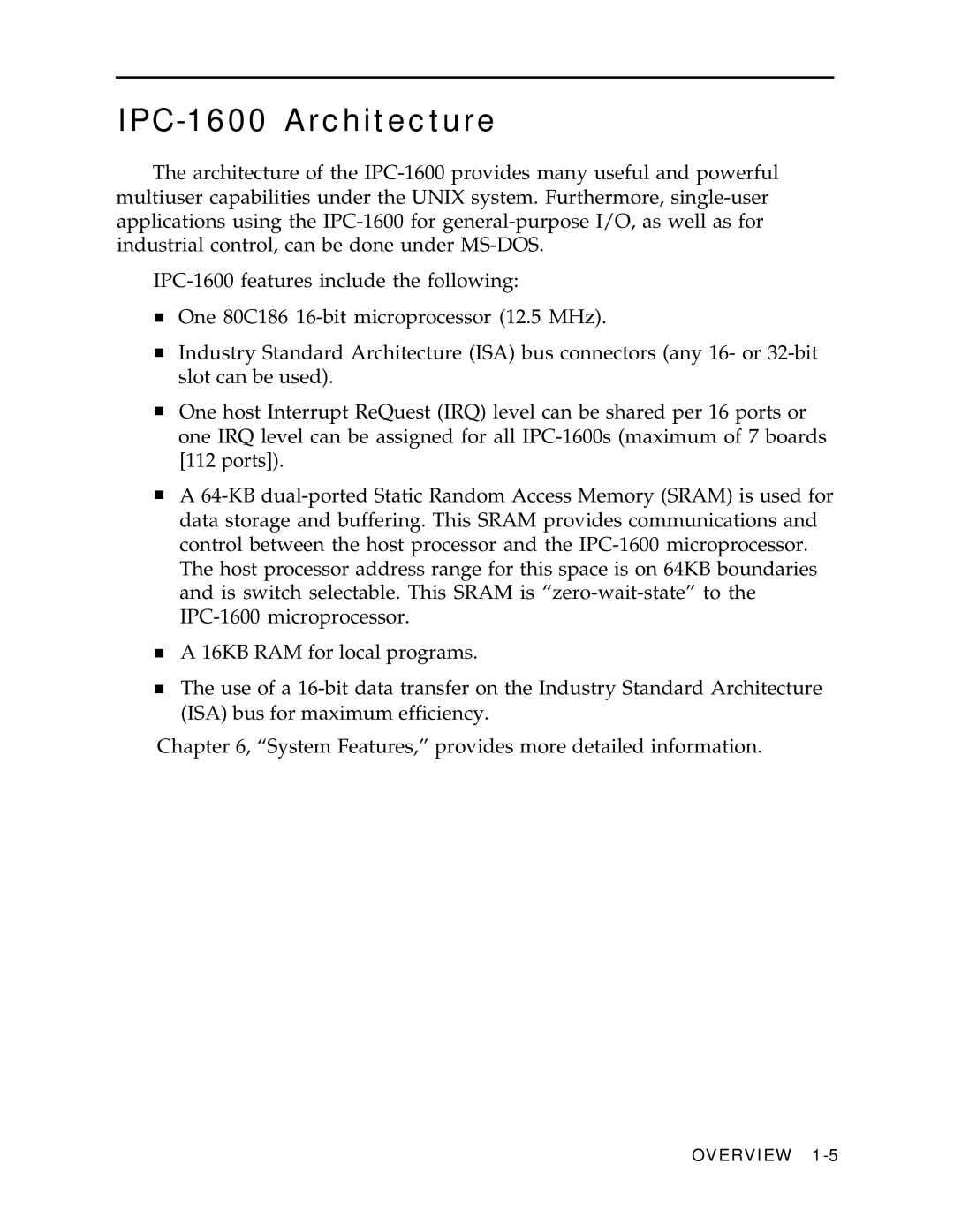
IPC-1600 Architecture
The architecture of the IPC-1600 provides many useful and powerful multiuser capabilities under the UNIX system. Furthermore, single-user applications using the IPC-1600 for general-purpose I/O, as well as for industrial control, can be done under MS-DOS.
IPC-1600 features include the following:
■One 80C186 16-bit microprocessor (12.5 MHz).
■Industry Standard Architecture (ISA) bus connectors (any 16- or 32-bit slot can be used).
■One host Interrupt ReQuest (IRQ) level can be shared per 16 ports or one IRQ level can be assigned for all IPC-1600s (maximum of 7 boards [112 ports]).
■A 64-KB dual-ported Static Random Access Memory (SRAM) is used for data storage and buffering. This SRAM provides communications and control between the host processor and the IPC-1600 microprocessor. The host processor address range for this space is on 64KB boundaries and is switch selectable. This SRAM is “zero-wait-state” to the IPC-1600 microprocessor.
■A 16KB RAM for local programs.
■The use of a 16-bit data transfer on the Industry Standard Architecture (ISA) bus for maximum efficiency.
Chapter 6, “System Features,” provides more detailed information.
